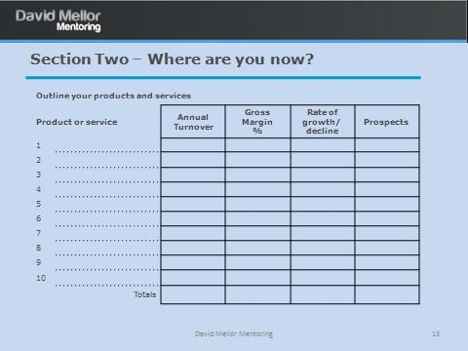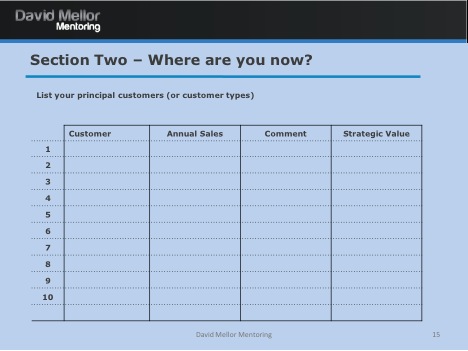As we draw to the end of this section on how far you have travelled on your journey, and what the world looks like, it is time to make sure that whatever plans you make for the business are 100% “in sync” with what you want for yourself.
A good place to start is your values and beliefs. I think it is important that the business reflects what is important to you, and checking that this is and will remain the case is an important part of you being able to live out your personal code of conduct every day.
Question one for yourself might be “what do I want out of the business”, or “what do I want to achieve”? Examples might be:
- “I want to be financially independent in 10 years”
- “I want to help small businesses make the right choices in their IT procurement”
- “I want to position the business so that I can sell it in 7 years time and use the proceeds to help me contribute to a philanthropic cause that is dear to my heart”
Once you know what you are aiming for, and in what timescale, you can begin to plan how you are going to achieve your personal goals.
Question two might be “what business am I in, and what business do I want to be in?” The way you phrase your answer is quite important, and will influence the way you market yourself going forward. In my case, I never say I am a consultant, or that I offer consultancy services. Rather I tend to say that I help owner-managers make more money and work less hours, thereby focusing on the benefits I believe I can bring to them.
Question three links back to the first question, namely “what am I in business for?”. Your answer could include something internal (i.e. for you) and external (for the community) e.g. “To leverage my skills and experience doing what I enjoy most (helping SMEs develop their brand) so that my clients get measurable results they wouldn’t otherwise get; being paid fairly for what I do so that I can retire in 5 years time, and feeling fulfilled in the process. “
Question four would be about what the business stands for. You may want to capture just 3 statements that say a lot about you and what is important to you:
- “We will always use ethically sourced materials”
- “We will sometimes work over the weekend if we genuinely believe that in doing so we are making a difference to our client”
- “We will never take on work where we have a doubt about our suitability to do the work”
Two final questions will complete the set:
- “Who are our clients?” – the more precise you can be about who your customers are, the more you can fine-tune your message so that you find this audience and they hear/see what you do and understand that it is for them.
- “What makes us distinctive?” – what differentiates you from your competitors, that makes you unique in some way, and is something that your clients value? N.B. you will need to keep this under regular review to check that your clients still value your distinctive offering.
Having addressed these questions, you are in a position to make 2 high-level statements, one about your core objective and the strategy associated with it. One of the best examples I have come across, which I have amended a little, was for a wealth management firm:
1. Their objective was “to become the provider of choice to high net worth individuals in London…..”
2. Their strategy to achieve this was “….by building trusted relationship and exceeding client expectations”
I encourage you to take this approach, and commit this to paper in the fewest words possible.
Finally, as we have already covered, the business is going to change, and your role is going to change with it. This is an ideal time to hold up the mirror and identify where your behavioural strengths are, and where you could most use help. I heard a great quote recently: ”leverage your strengths, and delegate your weaknesses”. It sums up the exercise you will need to go through quite well. PRISM is a great profiling tool to help you with this vital exercise. Take a look at www.prismbrainmapping.com.
We are now ready to start looking at how we are going to achieve the transformation.


